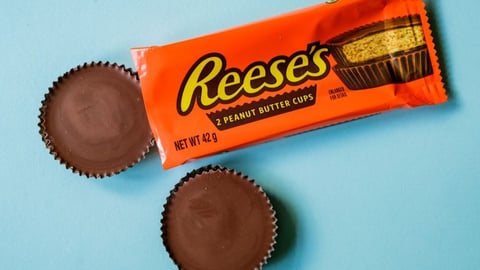How QR Codes Can Bypass Big Retail’s Gatekeeping
Nearly 40% of consumers tried new brands or products during the pandemic — a 12% increase from March 2020 before disaster hit. In fact, panic buying and stockpiling in the early days of COVID caused many CPG brands to vanish from shelves, prompting 20% of shoppers to turn to private-label products instead, according to McKinsey & Co. As a result, private label growth is outpacing national label growth due in part to being the more available and affordable option. Retailers are investing to take advantage.
As more retail-owned brands fill up shelf space, independent CPG brands face increasingly challenging odds. The re-emergence of QR codes offers a solution to help brands even the playing field.
Third-Party Cookies are Crumbling
Big retail’s ability to stockpile first-party data for in-house innovation is fueling their venture into private labels. This enables retail giants like Whole Foods or Walmart to effectively kick other products off the shelf, leaving smaller brands without a pathway to the consumer.
CPG brands rely primarily on big-name retail partners and platforms to sell their products. But selling is not the only issue. Because these partners own the online search, in-store experience and point of sale, CPG brands aren’t able to access the data gleaned from these interactions —leaving them in the dark about who their end consumers are and their preferences.
[See also: Mondelez Leverages QR Codes for Traceability]
To fill this gap, brands have looked to internet behavior — relying heavily on third-party cookies to track site visitors and collect audience data. But, unfortunately, that’s all about to change.
Recent restrictions such as Google's plan to end third-party cookies by 2023 will turn data collection on its head. Apple's decision to require opt-in consent for its Identifier for Advertisers (IDFA) and last year’s California Consumer Privacy Act (CCPA) add fuel to the fire. At the same time, the rise of mobile purchasing continues to lessen the value of desktop and browser-based cookies. The bottom line: Independent brands need new methods to interact and connect with their customers.
The Comeback of the QR Code
QR codes present a new opportunity for brands to access a plethora of first-party consumer intelligence. After years of declining use, QR codes have emerged as a way for brands to connect with consumers and collect customer data while bypassing the middleman.
Due to the demand for contactless menus, payments, and tickets during the pandemic, there’s been a 94% growth in QR code interactions between 2018 and 2020 alone. Last year, PayPal introduced QR code payments and has since connected them to around 1 million small businesses, enabling brands to easily share deals and offers and gather data on consumer spending habits.
In a retail environment, brands can affix these codes to the product packaging and create a digital touchpoint for in-store shoppers. Shoppers can scan a brand’s QR code, which takes them to a unique landing page where they can engage digitally. Here, a brand can offer more in-depth information on product ingredients, certifications (like sustainability), feedback mechanisms (like surveys) and even potential food or drink pairings.
The biggest opportunity, potentially, is to leverage QR codes to drive consumers directly back to the brand online through promotions and offers. The goal is to compel consumers to buy direct in the future, which offers higher margins.
[See also: Preparing for an E-commerce-Fueled Future]
QR codes also help independent brands compete by creating a digital footprint. The digital footprint created at point of scan enables brands to track their product’s success against different variables down the line. Each time a dynamic code is scanned, it recognizes where and when it took place. This detailed information can alert brands to preference in taste, price, packaging and more across different regions and demographics. It also enables brands to pinpoint and proactively resolve local issues that arise.
Understanding how consumers engage with a product is critical for product innovation, SKU expansion and brand differentiation. But without access to first-party insights, CPG brands are at a distinct disadvantage. QR codes help level the playing field by empowering brands to take back consumer intelligence, generate better customer experiences and remain competitive among the rise of private label brands.
Frank Pica is CEO and co-founder of Native AI, a platform that uses end-to-end data and AI to help CPG companies understand consumer preferences and create products that people love. He previously served as advisor to web-based 3D and AR solution provider for e-commerce, Vertebrae Inc (acquired by Snapchat, as well as VP of Adyoulike, an advertising technology platform that uses AI to improve the return-on-investment of Fortune 500 brands. Frank is also a founding member of AI-enabled marketing platform, LockerDome.




